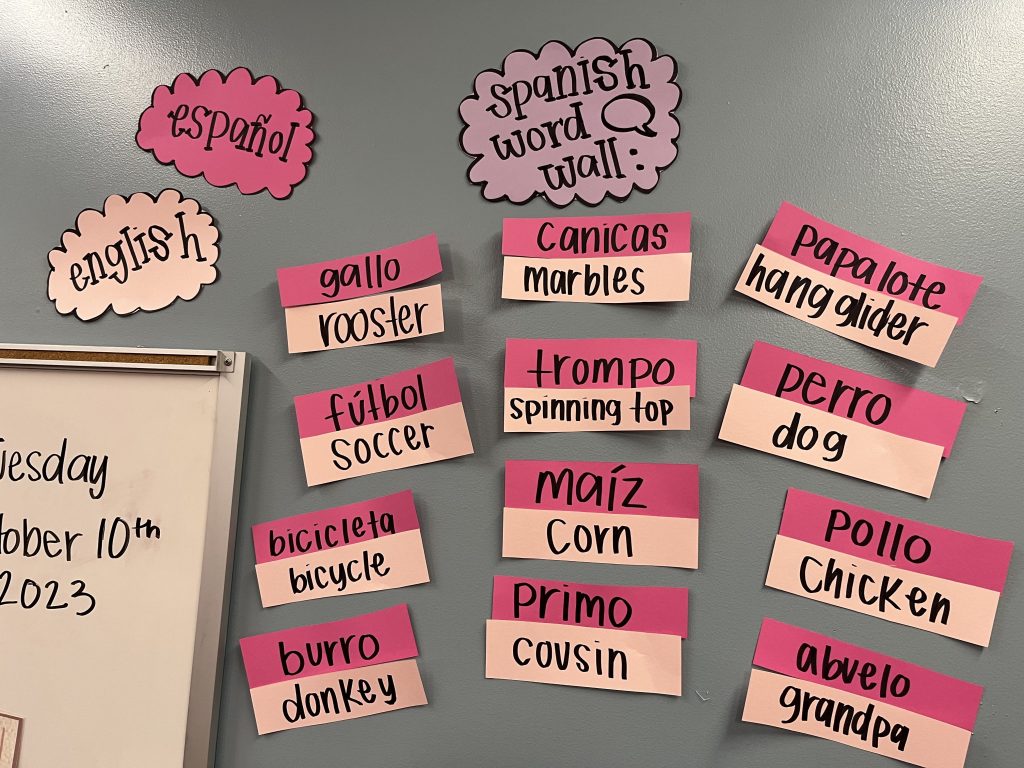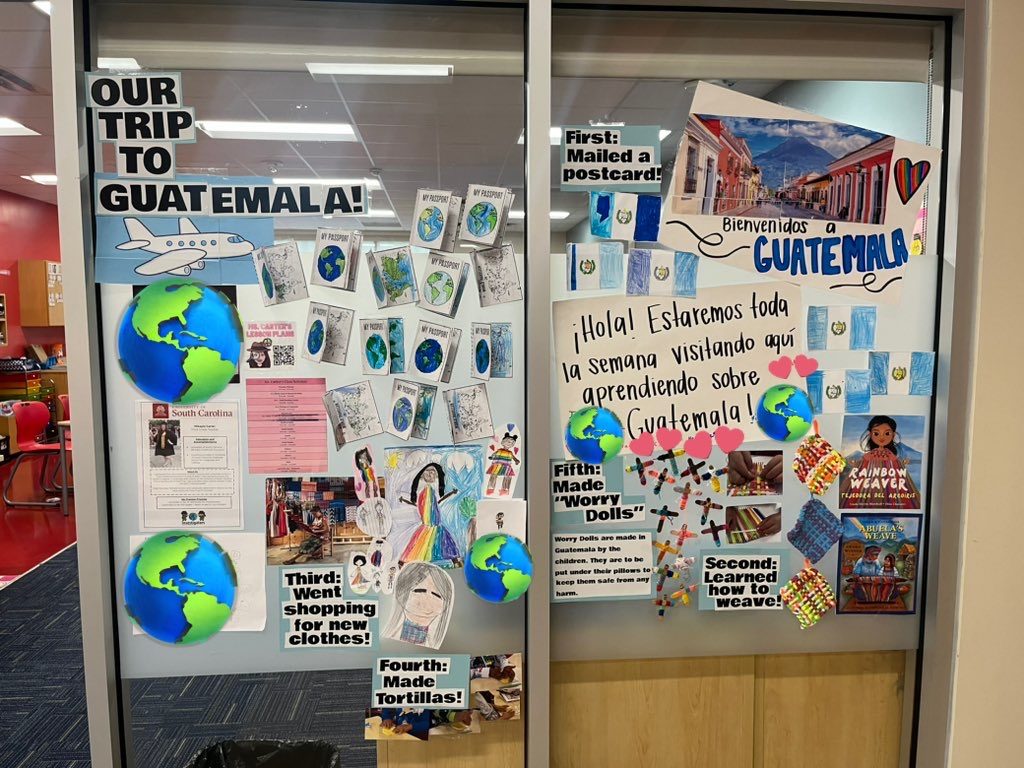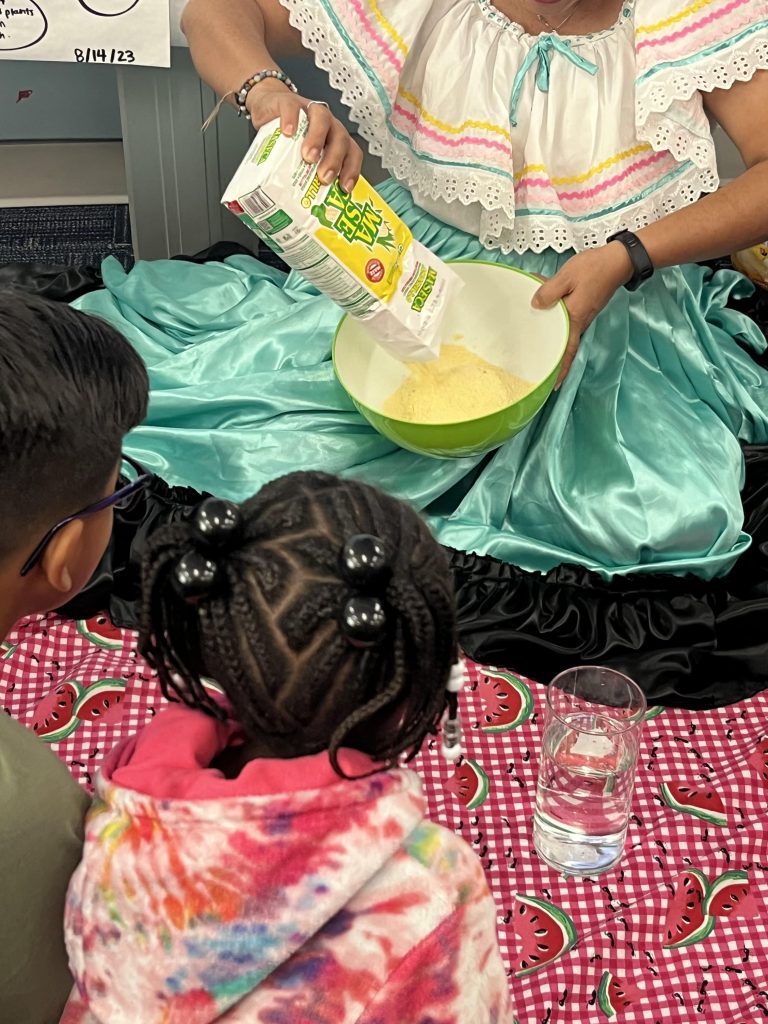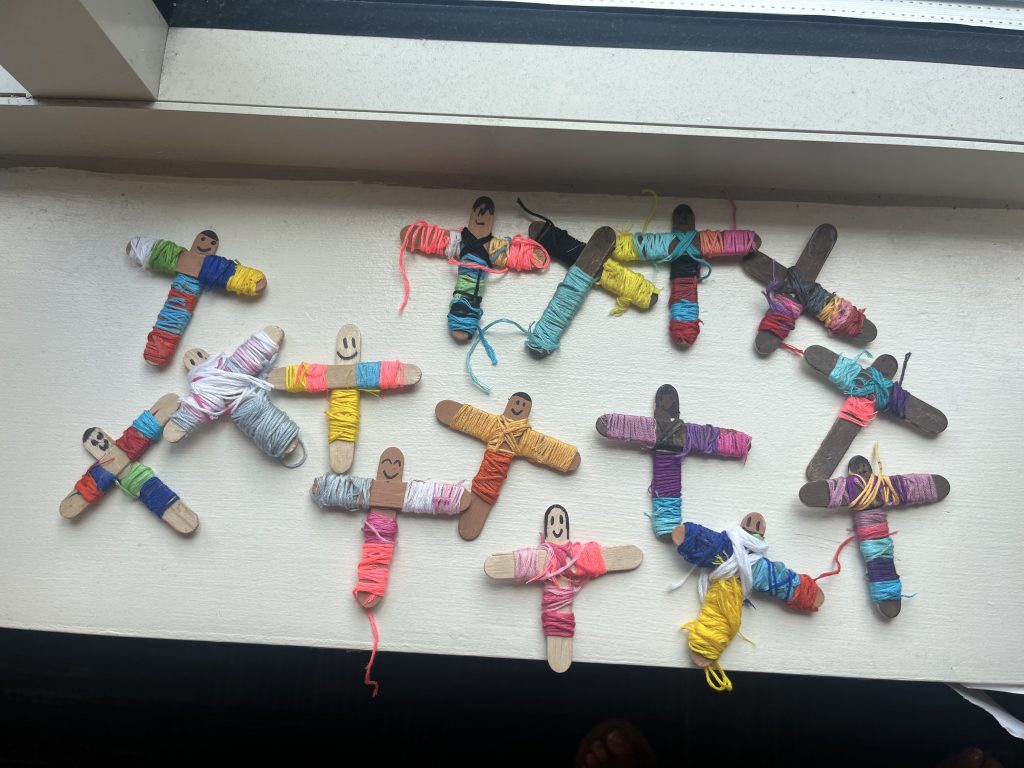Embracing Guatemalan Cultural Heritage: Classroom Celebrations during Hispanic Heritage Month
Mikayla Carter
I graduated from the University of South Carolina in spring 2023 eager to have my own classroom. I had already signed a contract with the school I wanted to work for, and from the moment I experienced its culture, I knew it was the perfect fit. When I received my first third-grade roster, I expected a diverse group with various backgrounds, but the reality was even more challenging than I expected. Out of fourteen students, seven spoke Spanish as their first language, and three of them knew very little English. This made me nervous because I wasn’t fluent in Spanish. On the first day of school, students arrived with shining faces, eager to learn. Their enthusiasm and attentiveness inspired me. Despite the language challenges, we managed to learn from and understand each other. Our differences in language did not hinder the formation of strong relationships; instead, they enriched our experience together.
Since that first week, I’ve been eager to buy more Latinx literature, learn about various Latinx cultures, and truly get to know students. I believe our time together is not random; we were meant to be in this classroom together. My classroom has transformed into their classroom. We now have a Spanish word wall, labels in Spanish throughout the room, engage in Spanish conversations, and share family photos and pictures of our hometowns. The classroom has become a space where they can appreciate themselves and their cultures.
For Hispanic Heritage Month, our school organized a school-wide gallery walk. Teachers collaborated with their students to explore various cultures, countries, and heritages within their classrooms, then displayed their findings outside their rooms. This allowed us to visit other “neighborhoods” (the way our school creates communities within grade levels) and learn about even more cultures.
Our class chose Guatemala as our country of study, and it wasn’t by chance. We had all our Latinx students write down their countries of origin on pieces of paper, placed them in a cup, and drew one at random—Guatemala! One student is from Guatemala, which made the choice even more special. (Don’t worry, the other countries are never overlooked.) We eagerly began planning our study of Guatemala.
The following week, students arrived at school to find passports on their desks with their photographs inside. They filled out the passport information and colored their passports to prepare for our “trip” to Guatemala. We “arrived” in Guatemala by watching videos about the country, learning about its president, and coloring the Guatemalan flag. We even made postcards in Spanish, the native language of Guatemala, to send to our friends “back home.”
Next, we read the books Rainbow Weaver/Tejedora del arcoíris by Linda Elovitz Marshall and Elisa Chavarri (2016) and Abuela’s Weave by Omar S. Castañeda and Enrique Sanchez (2013). We explored the tradition of rainbow weaving and even wove our own squares. We also studied traditional Guatemalan clothing and drew ourselves wearing these clothes, simulating a “shopping” experience. Later in the week, we had a special guest, Señora Herron, my former coaching teacher. She taught us how to make tortillas from scratch, a staple in many Guatemalan dishes. The students were able to take their homemade tortillas home along with a recipe to cook them.
The last activity we did together was making “Worry Dolls.” I saved this for the end because it was the most meaningful part of our study. In Guatemala, children create Worry Dolls and place them under their pillows to protect them from harm. From day one, I reassured students that they are safe at school and in our classroom. We gathered in a circle to paint, thread, and create our own Worry Dolls. This moment was special because we simply sat together, enjoying the present. We took turns singing songs, discussing our cultures, and learning phrases in Spanish. It was a bonding experience that strengthened our classroom community, and it’s something we still talk about today.
Since our Guatemala trip, I have transformed my teaching approach and how I represent students in the classroom. They now bring items from their countries and cultures to share with the class, and we have weekly show-and-tell sessions during morning meetings. Within these four walls, we have become a family, evident in everything we do. We have won trophies and competitions among other classes, always supporting each other no matter what.
As an educator, I have learned that my role is to help students appreciate themselves and others. Regardless of the languages we speak, nothing can stop us from growing and learning together.
References
Castañeda, O. (2013). Abuela’s weave (E. Sanchez, Illus.). Lee & Low.
Marshall, L. E. (2016). Rainbow weaver/Tejedora del arcoíris (E. Chavarri, Illus.). Lee & Low.
Mikayla Carter completed her first year of teaching third grade at Jackson Creek Elementary School. She is a graduate of the University of South Carolina and is pursuing her MEd in Language & Literacy with a focus on Multilingual Learners. She is passionate about contributing to her school community and creating a safe space in her classroom for young learners. She was named ‘Rookie of the Year’ by her school.
Authors retain copyright over the vignettes published in this journal and grant the journal right of first publication with the work simultaneously licensed under the following Creative Commons License:

WOW Stories, Volume XI, Issue 1 by Worlds of Words is licensed under a Creative Commons Attribution-NonCommercial-ShareAlike 4.0 International License.
Based on work by Mikayla Carter at https://wowlit.org/on-line-publications/stories/xi-1/8.
WOW stories: connections from the classroom
ISSN 2577-0551




